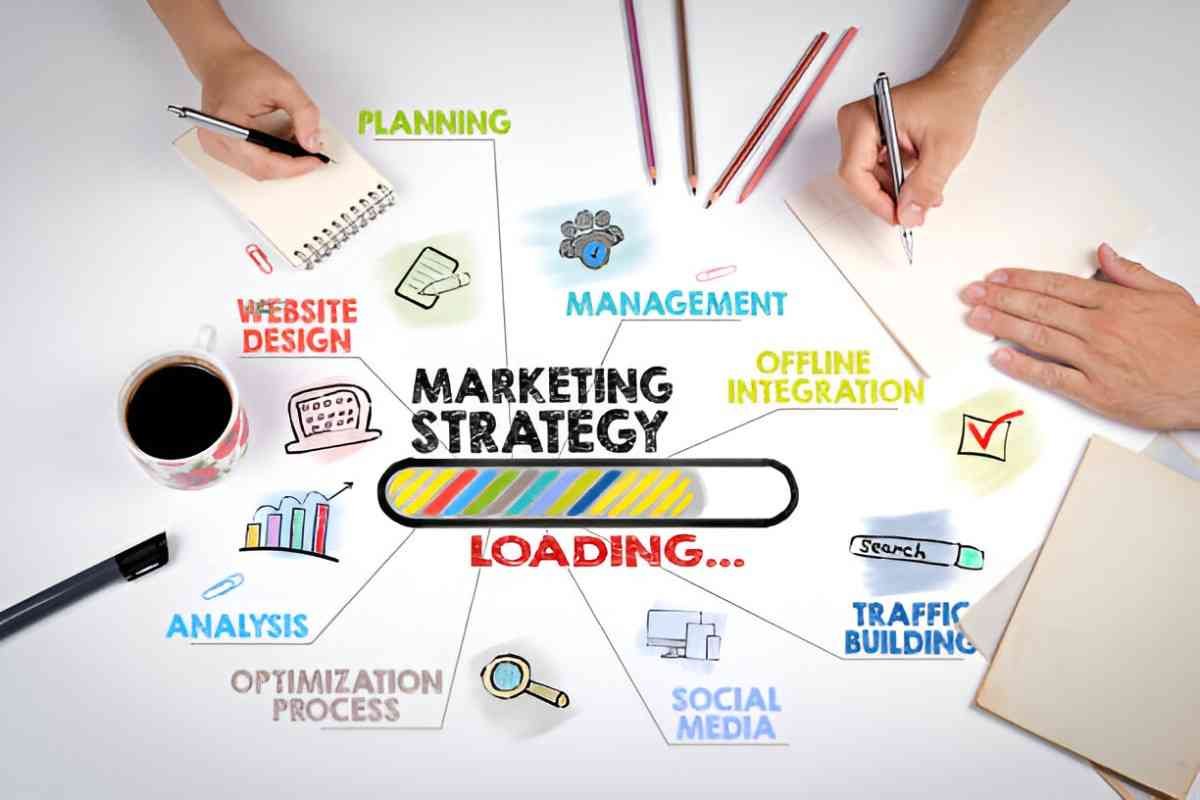In today’s fast-paced digital landscape, marketing has evolved beyond static campaigns and pre-planned strategies. Real-time marketing has emerged as a powerful approach that allows businesses to engage with their audience dynamically, responding to trends, events, and consumer behavior as they happen. As someone deeply immersed in the finance and accounting fields, I’ve seen how real-time marketing can drive measurable results, especially when tied to data-driven decision-making. In this guide, I’ll walk you through the fundamentals of real-time marketing, its benefits, challenges, and how you can implement dynamic strategies to stay ahead of the curve.
Table of Contents
What Is Real-Time Marketing?
Real-time marketing is the practice of delivering personalized, relevant content to your audience at the right moment. Unlike traditional marketing, which relies on pre-scheduled campaigns, real-time marketing leverages live data, social media trends, and current events to create timely and impactful interactions. For example, Oreo’s famous “Dunk in the Dark” tweet during the 2013 Super Bowl blackout is a classic example of real-time marketing done right.
From a financial perspective, real-time marketing can be seen as an investment in agility. Just as businesses allocate resources to respond to market fluctuations, real-time marketing requires a flexible budget and a willingness to adapt. The return on investment (ROI) can be significant, as timely engagement often leads to higher conversion rates and customer loyalty.
Why Real-Time Marketing Matters
The rise of social media and the 24/7 news cycle has fundamentally changed how consumers interact with brands. People expect immediate responses and personalized experiences. According to a study by Salesforce, 76% of consumers expect companies to understand their needs and expectations. Real-time marketing meets this demand by enabling brands to connect with their audience in meaningful ways.
From a socioeconomic standpoint, real-time marketing is particularly relevant in the US, where consumers are highly connected and tech-savvy. With over 85% of Americans owning a smartphone, the opportunity to engage with audiences in real-time is immense. Additionally, the competitive nature of the US market means that businesses must constantly innovate to stay relevant.
Key Components of Real-Time Marketing
To understand real-time marketing, let’s break it down into its core components:
- Data Analytics: Real-time marketing relies heavily on data. By analyzing consumer behavior, social media trends, and market conditions, businesses can identify opportunities for timely engagement. For example, tools like Google Analytics and social listening platforms provide insights into what your audience is talking about right now.
- Content Creation: Speed is crucial in real-time marketing. Brands must create content quickly without compromising quality. This requires a well-coordinated team and access to the right tools, such as graphic design software and content management systems.
- Distribution Channels: Social media platforms like Twitter, Instagram, and TikTok are ideal for real-time marketing due to their immediacy and wide reach. Email marketing and SMS campaigns can also be effective, especially for personalized offers.
- Measurement and Optimization: Real-time marketing is not a one-and-done strategy. Continuous measurement and optimization are essential to ensure success. Key performance indicators (KPIs) such as engagement rates, click-through rates, and conversion rates should be monitored closely.
The Role of Data in Real-Time Marketing
Data is the backbone of real-time marketing. Without accurate and timely data, it’s impossible to make informed decisions. Let’s explore how data drives real-time marketing strategies.
Predictive Analytics
Predictive analytics uses historical data to forecast future trends. For example, if a retailer notices a spike in sales of winter coats every November, they can prepare a real-time marketing campaign to capitalize on this trend. The mathematical formula for predictive analytics can be expressed as:
y = \beta_0 + \beta_1x_1 + \beta_2x_2 + … + \beta_nx_n + \epsilonWhere:
- y is the predicted outcome (e.g., sales).
- \beta_0 is the intercept.
- \beta_1, \beta_2, …, \beta_n are the coefficients.
- x_1, x_2, …, x_n are the predictor variables (e.g., weather, promotions).
- \epsilon is the error term.
Sentiment Analysis
Sentiment analysis involves analyzing social media posts, reviews, and comments to gauge public opinion about a brand or product. This information can be used to craft real-time responses that resonate with your audience. For example, if a new product launch receives overwhelmingly positive feedback, you can create a real-time campaign to amplify the buzz.
A/B Testing
A/B testing is a method of comparing two versions of a marketing asset to determine which performs better. For instance, you might test two different email subject lines to see which one generates a higher open rate. The results can inform your real-time marketing decisions.
Real-Time Marketing in Action: Examples and Case Studies
To illustrate the power of real-time marketing, let’s look at some real-world examples.
Example 1: Oreo’s “Dunk in the Dark” Campaign
During the 2013 Super Bowl, a sudden blackout halted the game. Oreo quickly tweeted, “You can still dunk in the dark,” accompanied by a simple image of an Oreo cookie in partial darkness. The tweet went viral, garnering thousands of retweets and likes. This campaign demonstrated how a brand could leverage a live event to create a memorable moment.
Example 2: Wendy’s Twitter Roasts
Wendy’s has mastered the art of real-time marketing on Twitter by engaging in witty banter with followers and competitors. Their humorous and timely responses have earned them a loyal following and significant media coverage.
Example 3: Nike’s Colin Kaepernick Campaign
Nike’s decision to feature Colin Kaepernick in their “Just Do It” campaign was a bold real-time marketing move. By aligning with a controversial figure, Nike sparked a national conversation and strengthened its brand identity among its target audience.
Challenges of Real-Time Marketing
While real-time marketing offers numerous benefits, it’s not without its challenges.
- Resource Intensity: Real-time marketing requires a dedicated team and access to advanced tools. For small businesses with limited resources, this can be a significant barrier.
- Risk of Backfiring: Timing is everything in real-time marketing. A poorly executed campaign can damage your brand’s reputation. For example, a brand that tries to capitalize on a tragic event may face backlash.
- Data Privacy Concerns: Collecting and analyzing consumer data raises privacy issues. Businesses must ensure compliance with regulations like the General Data Protection Regulation (GDPR) and the California Consumer Privacy Act (CCPA).
Implementing Real-Time Marketing: A Step-by-Step Guide
Now that we’ve covered the basics, let’s dive into how you can implement real-time marketing in your business.
Step 1: Set Clear Objectives
Before launching a real-time marketing campaign, define your goals. Are you looking to increase brand awareness, drive sales, or improve customer engagement? Clear objectives will guide your strategy and help you measure success.
Step 2: Build a Skilled Team
Real-time marketing requires a team with diverse skills, including data analysis, content creation, and social media management. Ensure your team is equipped to handle the fast-paced nature of real-time marketing.
Step 3: Invest in the Right Tools
From social listening platforms to analytics software, the right tools are essential for real-time marketing. Some popular options include Hootsuite, Sprout Social, and Google Analytics.
Step 4: Monitor Trends and Events
Stay informed about industry trends, cultural events, and social media conversations. Tools like Google Trends and Twitter Trends can help you identify opportunities for real-time engagement.
Step 5: Create a Content Calendar
While real-time marketing is inherently spontaneous, having a content calendar can help you plan ahead. Include key dates, holidays, and events that are relevant to your audience.
Step 6: Measure and Optimize
Track the performance of your real-time marketing campaigns using KPIs like engagement rates, click-through rates, and conversion rates. Use this data to refine your strategy and improve future campaigns.
Real-Time Marketing and ROI: A Financial Perspective
As someone with a background in finance, I’m always interested in the ROI of marketing strategies. Real-time marketing can deliver a strong ROI, but it’s important to measure it accurately.
The formula for ROI is:
ROI = \frac{Net\ Profit}{Cost\ of\ Investment} \times 100For example, if a real-time marketing campaign generates $10,000 in sales and costs $2,000 to execute, the ROI would be:
ROI = \frac{10,000 - 2,000}{2,000} \times 100 = 400\%This high ROI demonstrates the potential of real-time marketing when executed effectively.
The Future of Real-Time Marketing
As technology continues to evolve, real-time marketing will become even more sophisticated. Artificial intelligence (AI) and machine learning will play a key role in analyzing data and predicting trends. Additionally, the rise of augmented reality (AR) and virtual reality (VR) will open up new possibilities for immersive real-time experiences.
Conclusion
Real-time marketing is a dynamic and powerful approach that allows businesses to connect with their audience in meaningful ways. By leveraging data, staying informed about trends, and creating timely content, you can drive engagement and achieve measurable results. While it comes with challenges, the potential rewards make it a worthwhile investment.





